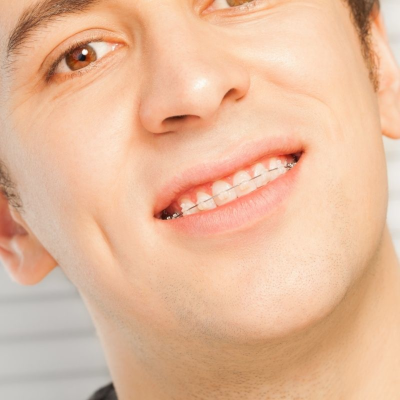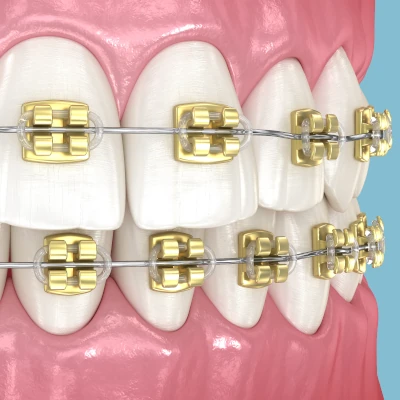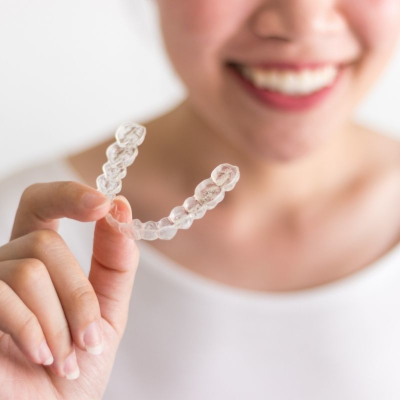Gold Braces
Gold braces offer the perfect combination of durability and aesthetics, bringing a touch of elegance to traditional orthodontic treatment. Crafted from high-quality stainless steel and coated with a luxurious champagne-gold finish, these braces provide the same strength and effectiveness as standard metal braces while offering a more refined and stylish look.
One of the key advantages of gold braces is their versatility in appearance. You can choose to enhance their brilliance with gold-colored wires for a bold, glamorous look, or opt for tooth-colored wires to create a more subtle, blended effect that harmonizes with your natural smile. Whether you want to make a fashion statement or keep your orthodontic treatment discreet, gold braces allow you to customize your look to match your style.
Beyond aesthetics, gold braces offer the same level of precision and control as traditional metal braces, ensuring your orthodontist can guide your teeth into perfect alignment with efficiency and accuracy. If you’re looking for a treatment that delivers both performance and sophistication, gold braces are a brilliant choice.







